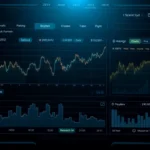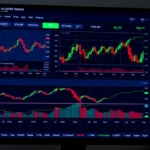Unlocking Investment Success with In-Depth Investment Reports
In the fast-paced world of investing, making informed decisions is paramount. As markets become increasingly complex and volatile, reliance on superficial data or surface-level insights can expose investors to unnecessary risks. This is where In-Depth Investment Reports become indispensable, offering comprehensive analysis, actionable intelligence, and strategic insights that can elevate your investment approach to the next level. By leveraging detailed reports from reputable sources, investors can better understand market trends, assess risks, and identify opportunities with greater confidence.
Understanding the Significance of In-Depth Investment Reports
What Are In-Depth Investment Reports?
In-depth investment reports are extensive documents produced by financial analysts, research firms, or investment institutions that delve into specific assets, sectors, or broader market trends. Unlike quick summaries or headlines, these reports provide detailed data, historical context, predictive models, and nuanced insights designed to assist investors in making well-informed decisions. They often include financial statements analysis, valuation metrics, macroeconomic influences, and sector-specific dynamics, all synthesized into a comprehensive narrative.
Their Role in Smarter Investing
These reports serve as a critical foundation for strategic portfolio management. They help investors understand underlying fundamentals, evaluate potential growth or decline trajectories, and assess the viability of financial instruments under different economic scenarios. The depth and rigor of these reports make them invaluable for both institutional investors and individual traders who aim to achieve superior risk-adjusted returns.
Benefits for Investors
- Enhanced Decision-Making: Detailed data analytics reduce guesswork and foster fact-based decisions.
- Risk Identification: Early detection of warning signs or market anomalies mitigates downside risks.
- Strategic Planning: Facilitates long-term planning by understanding macroeconomic and industry trends.
- Competitive Edge: Access to exclusive intelligence that sets investors apart from the crowd.
Components of a High-Quality Investment Report
Market Analysis and Trends
Effective investment reports start with a thorough macroeconomic assessment, including GDP growth, inflation rates, monetary policies, and geopolitical influences. They analyze how these factors influence various sectors and asset classes, providing predictions and scenarios based on historical data and current conditions.
Risk Assessment and Performance Metrics
Quantitative measures such as volatility, beta coefficients, value at risk (VaR), and Sharpe ratios are integral. These metrics help investors understand the risk-reward profile of assets. Additionally, qualitative assessments—such as regulatory risks, management quality, and competitive positioning—round out the evaluation.
Company and Sector Insights
Deep dives into individual companies include financial statement analysis, competitive advantages (moats), growth forecasts, and management quality. Sector analyses compare performance metrics across industries, identify emerging trends, and forecast future profitability. This multi-layered approach ensures a holistic view of the investment landscape.
Best Practices for Utilizing Investment Reports Effectively
Interpreting Data and Metrics
Investors must develop the skill to analyze complex data sets critically. Understanding ratios, valuation methods, and economic indicators enables accurate interpretation. For example, recognizing that a high price-earnings ratio might indicate overvaluation or growth expectations is essential.
Integrating Reports into Investment Strategies
Rather than viewing reports as standalone documents, successful investors incorporate insights into a coherent strategy. This involves setting clear investment goals, conducting scenario analysis, and balancing qualitative judgments with quantitative data to optimize portfolio configurations.
Tools and Resources for In-Depth Research
Leveraging advanced tools such as Bloomberg Terminal, Morningstar Direct, or proprietary analytics platforms can streamline access to rich data. Additionally, subscribing to specialized research services, participating in webinars, and engaging with financial advisory professionals can enhance your understanding and application of these reports.
Evaluating Top Providers of In-Depth Investment Reports
Features and Differentiators
Leading providers distinguish themselves through the depth of their analysis, timeliness of reports, and usability of their platforms. For example, some focus on sector-specific insights, while others excel in macroeconomic forecasting or quantitative modeling. The integration of AI-driven analytics is also a growing trend among top firms.
Pricing and Accessibility
While premium reports are often subscription-based, many providers offer tiered access suited for different investor needs—from individual traders to large institutional clients. Accessibility via mobile apps, customizable dashboards, and real-time updates further enhance usability.
Customer Reviews and Effectiveness
Successful investment professionals evaluate providers based on the actionable quality of insights, customer support, and integration capabilities. Peer reviews often highlight reliability, accuracy, and the ability to forecast market shifts as critical success factors.
Future Trends in Investment Reporting
Technological Advances and Automation
Artificial intelligence, machine learning, and big data analytics are revolutionizing how reports are generated. Automated systems can now analyze vast datasets in real time, providing predictive insights faster and with greater precision.
Personalization and Customization
Future investment reports will increasingly be tailored to individual investor goals, risk appetite, and experience level. Customized dashboards and AI-driven recommendations will transform passive data consumption into active, strategic tools.
Global Market Integration
With markets becoming more interconnected, reports will incorporate global economic indicators, geopolitical risks, and currency effects in a unified framework. This holistic approach allows investors to navigate complex cross-border investment environments more effectively.









